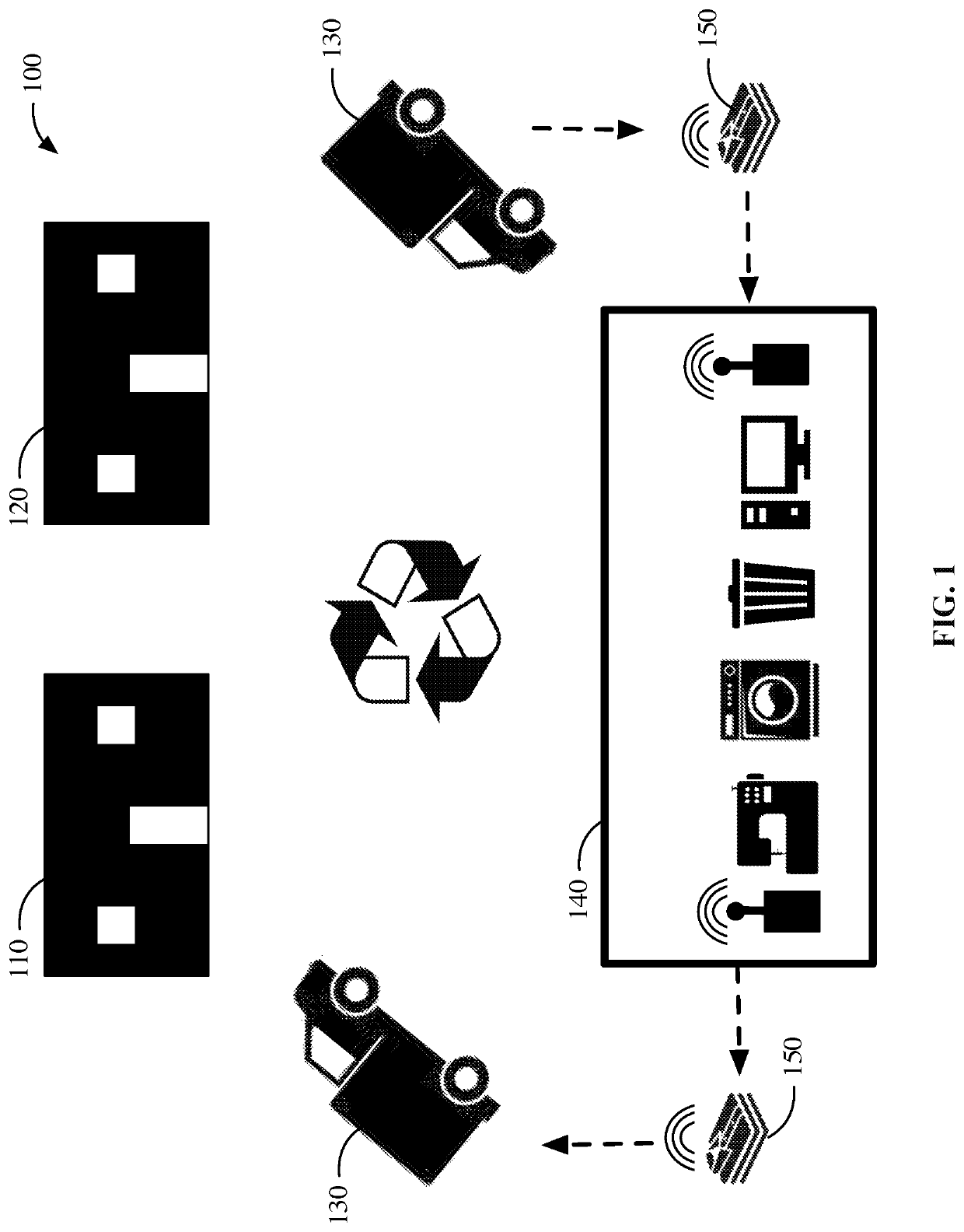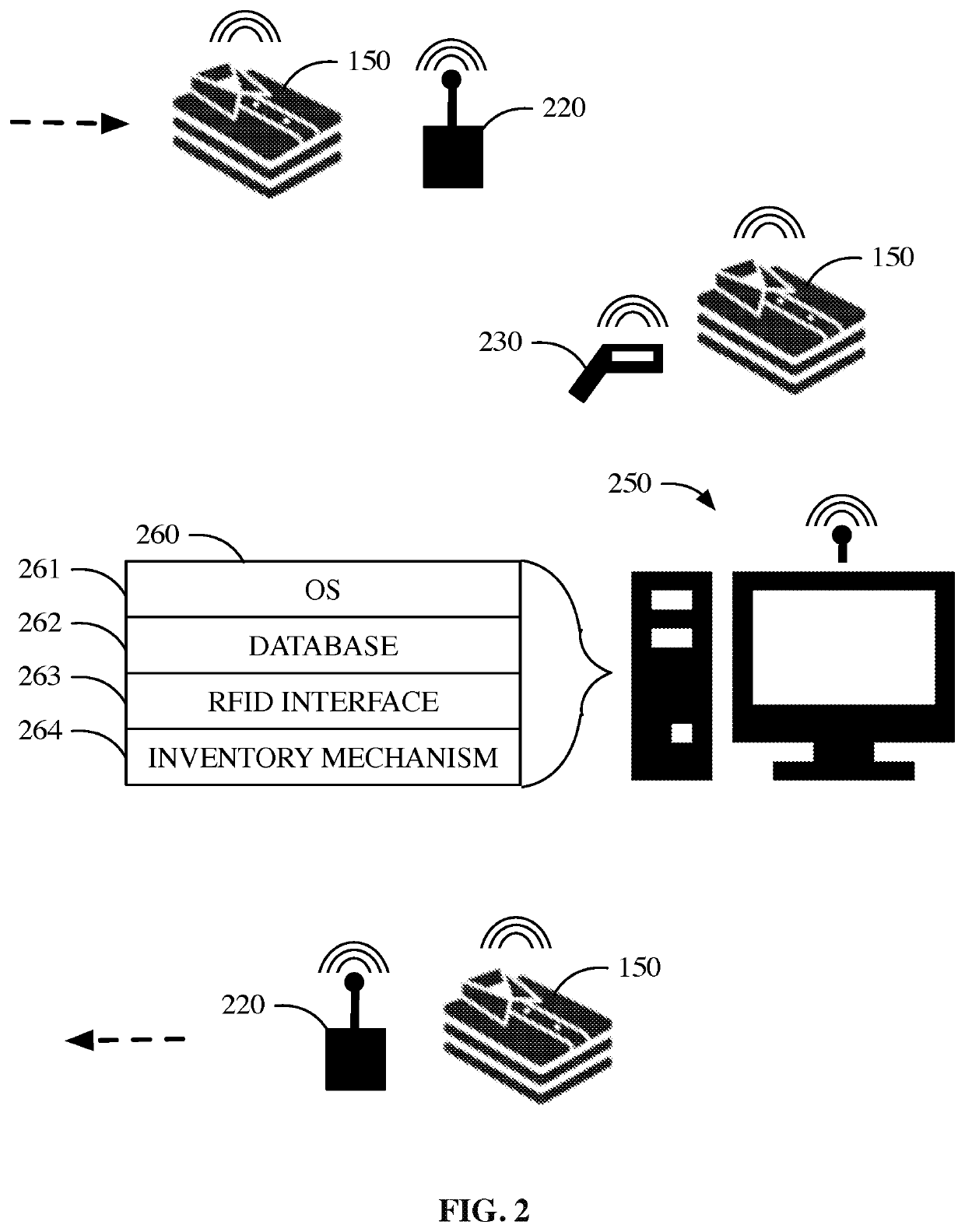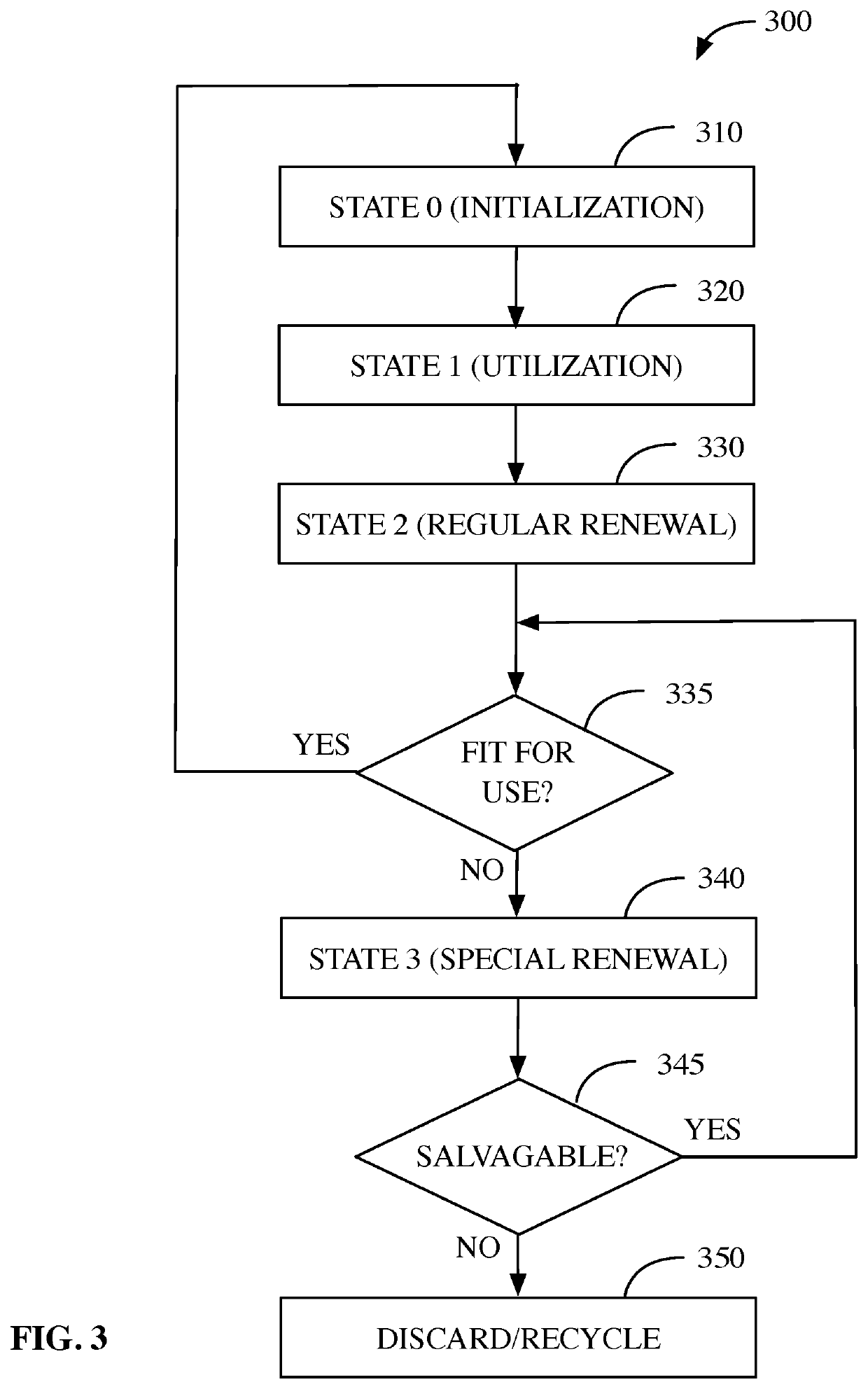System and method for fractional RFID inventory tracking and management
a technology of inventory tracking and management system, applied in the field of inventory tracking system, can solve the problems of exacerbated inventory control and linen inventory management problems, ineffective linen inventory tracking for service organizations, and insufficient return on investment needed to implement an effective inventory tracking system, etc., and achieves a highly reliable system and method. , the effect of low cos
- Summary
- Abstract
- Description
- Claims
- Application Information
AI Technical Summary
Benefits of technology
Problems solved by technology
Method used
Image
Examples
Embodiment Construction
[0031]The most preferred embodiments of the present invention, when adapted for use in a linen service application, comprises: 1) an RFID scanning station at the linen processing facility used for: scanning clean linens prior to delivery to a customer; scanning clean linens still stained after regular washing; special washing for items already washed over in a generic stain treatment wash; and scanning to aid a linen service worker in identifying items in a customer order that are incongruent with the expected outcome (e.g., an item in the delivery container that is not in the customer's requested order). This station is most commonly used for scanning clean linens prior to delivery and can be adapted through the use of software and physical settings to assist the linen service in locating any textile items of the wrong type mistakenly packaged for delivery to a customer; 2) an RFID scanning station for scanning soiled linens returned to the linen processing facility for processing;...
PUM
 Login to View More
Login to View More Abstract
Description
Claims
Application Information
 Login to View More
Login to View More - R&D
- Intellectual Property
- Life Sciences
- Materials
- Tech Scout
- Unparalleled Data Quality
- Higher Quality Content
- 60% Fewer Hallucinations
Browse by: Latest US Patents, China's latest patents, Technical Efficacy Thesaurus, Application Domain, Technology Topic, Popular Technical Reports.
© 2025 PatSnap. All rights reserved.Legal|Privacy policy|Modern Slavery Act Transparency Statement|Sitemap|About US| Contact US: help@patsnap.com



